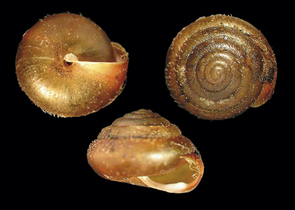Nature Conservation 3/2009 — 30. 6. 2009 — Research, Surveys and Data Management — Print article in pdf
Endemism in the Czech Republic – Part 2. Animal Endemism, Endemic Species Protection
Endemismus živočichů, ochrana endemismu – 2. část

Studying and identification of endemism in animals, particularly in insects, is much more difficult than in plants.
In the former, there is higher species richness, various obstacles to study them easily and a very little knowledge of some animal groups. Based on the up-to-date knowledge, a few dozens animal species and subspecies shall be considered endemic to the Czech Republic. Nevertheless, the taxonomic status in most of them has not been clear or their distribution has not been satisfactorily known yet. Animal endemic distribution is very similar to that of plant endemics within the country. Moreover, there are some differences. The High Sudeten Mts. including the Krkonoše/Giant Mts. are inhabited by a few endemics only. There are only three Krkonoše/Giant Mts. endemics, e.g. the moth subspecies Psodos quadrifaria sudetica. Forest steppe to steppe habitats in the České středohoří/Bohemian Mittelgebirge Hills and in western parts of Central Bohemia harbour relatively high number of animal endemics. They are relic isolated habitats where endemic taxa, e.g. the Bohemian Tooth-legged Grasshopper Stenobothrus eurasius bohemicus developed in the Holocene. Within the area, the only endemic vertebrate for the Czech Republic, namely the Cimrman Ural Field/Pygmy Mouse (Apodemus uralensis cimrmani), described only in 2002, occurs. Endemic insect species can also be found in various non-forest habitat types in the Czech Republic: e.g., the true weevil Pseudorchestes purkynei) lives on sand habitats. Endemic gastropods should also be mentioned, because their endemism is young. They are in total six and occur particularly in broad-leaved deciduous or mixed forests and most of the forest species had arrived in what is now the Czech Republic only in the warm and wet Atlantic period. Endemic plant and animal taxa occurring in the Czech Republic contributes to global biodiversity. Unfortunately, some of them have become extinct. The future of the Czech endemics highly strongly depends on further development of the nature conservation and landscape protection in the country. Most of them have been listed among threatened, but particularly in animals, it is difficult to estimate their real conservation status including the level of risk posed to them. Only minor part of the Czech endemics (in plants, approx. one third, in animals less than one tenth) has been specially protected under the legislation. Territorial protection, i.e. conserving and managing their sites, is the most effective way how to reasonably conserve them. Although most of the endemics in the Czech Republic live in National Parks and Protected Landscape Areas, their conservation is effective only in the most strictly protected zones and areas. In addition, some endemic plant and animal species and subspecies require specific management measures. Nature conservation should pay to endemism (uniqueness) the same attention as to biodiversity and its threatened components.

